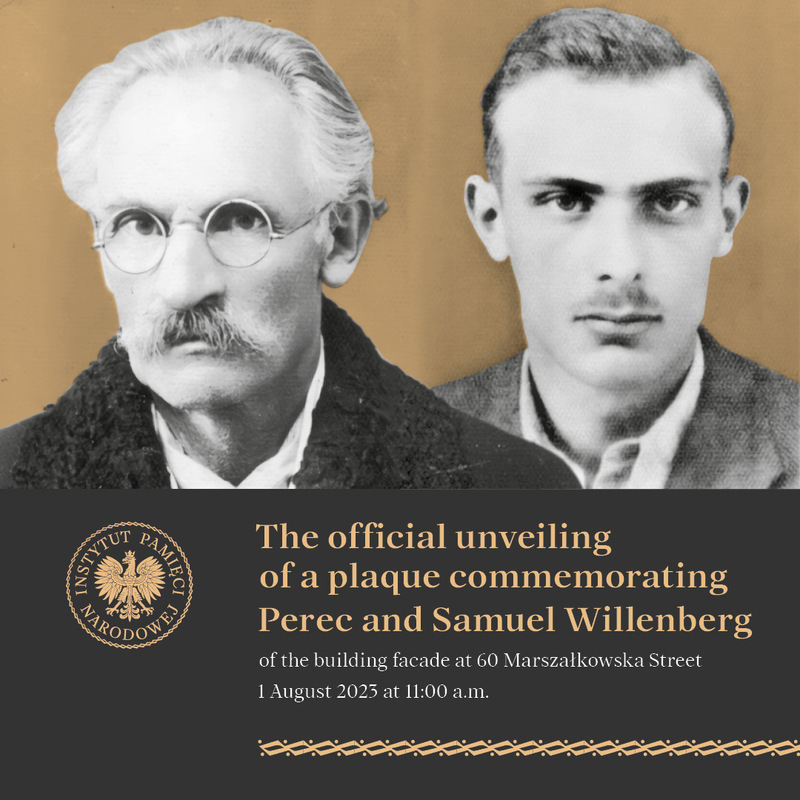Władysław Szpilman, the Pianist, hiding in German-occupied Warsaw, practiced his art without a piano, so no sound came out. Perec Willenberg, the artist, practiced his art with brush and paint, and traces of it remained.
Perec, just like Szpilman, had made a name for himself long before WWII, only in visual arts, not music. He was a renowned creator of synagogue frescoes in so-called "Jewish Neo-Renaissance" style he developed, and also a husband and father of three. Then, the Germans came, and they closed or burned synagogues, while the Jews they closed in ghettos and burned them in death camps; they did that with two of three Willenberg children.
Perec lost touch with his family, but not with reality. He went into hiding, painting commissioned scenes and portraits to make a living, and frequently changing addresses. When the Warsaw Uprising broke out, he was holed up at 60 Marszałkowska Street, while his only surviving child, Samuel, having gone through a 10-month spell in Treblinka and broken free, was taking his payback as a soldier of the underground, fighting in that very uprising.
"I was on a barricade in Mokotowska street," remembered Samuel, "during an artillery barrage targeting the city center. I saw four heavy shells land near the house where my father was hiding. I ran there ... found him in bed, covered with dust and rubble, and told him to go to the basement. Before we left, he grabbed his drawing kit ... stopped at the basement door and wouldn’t go down. On the ceiling, he began sketching Christ’s head with charcoal."
The portrait came with words "Jesus, I Trust In You” – and trust was what it put in the hearts of the tenants. Some of them even believed that the drawing had something to do with the fact that 60 Marszałkowska Street was the only house in the immediate vicinity to remain intact. True or not, this is a heartwarming story of survival: Willenberg father and son survived the Uprising and the war, the house survived, and so did the portrait inside.
Like father, like son: fifty years went by, and Samuel himself became an artist, reaching into his soul, pulling out horrible Treblinka scenes and casting them in bronze. The sculptures were made into an educational project by the IPN International Cooperation Office, and sent on a tour of Poland to carry a message from a survivor. Meanwhile, a message from another survivor, left on a wall of a Warsaw house, has been patiently waiting for its turn.
This message calls for action, but not only as a trace of life in hiding, more palpable that Szpilman’s soundless music; it’s a reminder of an uprising by people who rose against all odds; it’s a remainder of a talent doomed to extermination just because it was Jewish; it’s a memento of German destruction of Warsaw, preserved in a house that stood while so many others around crumbled. It’s a message that ought to be carried on.
If you're planning to be in Warsaw on 1 August, come to 60 Marszałkowska Street and see the unveiling of a plaque to Perec Willenberg, an artist, and his son Samuel, one of the Uprising soldiers - and artist in his own right.
